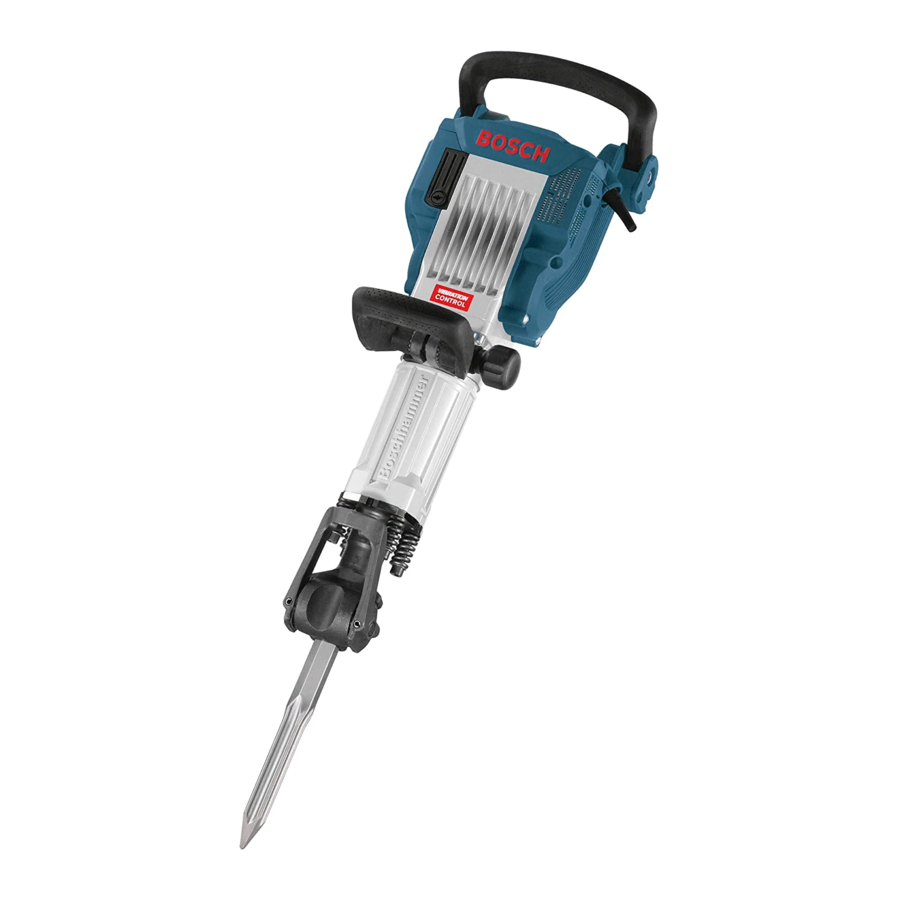Bosch 1191VSRK Instrukcja obsługi/bezpieczeństwa - Strona 4
Przeglądaj online lub pobierz pdf Instrukcja obsługi/bezpieczeństwa dla Wiertarka Bosch 1191VSRK. Bosch 1191VSRK 37 stron. Bosch power tools hammer & hammer drill brochure
Również dla Bosch 1191VSRK: Skrócona instrukcja obsługi (25 strony)

BM 160992A08A 01-13_BM 160992A08A 01-13.qxp 1/10/13 2:43 PM Page 4
chuck. If the bit is not inserted deep
enough, the grip of the jaws over the bit is
reduced and the loss of control is increased.
Do not use dull or damaged bits and
accessories. Dull or damaged bits have a
greater tendency to bind in the workpiece.
When removing the bit from the tool avoid
contact with skin and use proper
protective gloves when grasping the bit
or accessory. Accessories may be hot after
prolonged use.
GFCI and personal protection devices like
electrician's rubber gloves and footwear will
further enhance your personal safety.
Do not use AC only rated tools with a DC
power supply. While the tool may appear to
work, the electrical components of the AC
rated tool are likely to fail and create a hazard
to the operator.
Keep handles dry, clean and free from oil
and grease. Slippery hands cannot safely
control the power tool.
Develop a periodic maintenance schedule
for your tool. When cleaning a tool be
careful not to disassemble any portion of
the tool since internal wires may be
misplaced or pinched or safety guard return
springs may be improperly mounted.
Certain cleaning agents such as gasoline,
carbon tetrachloride, ammonia, etc. may
damage plastic parts.
Risk of injury to user. The power cord must only
be serviced by a Bosch Factory Service Center
or Authorized Bosch Service Station.
Check to see that keys and adjusting
wrenches are removed from the drill
before switching the tool "ON". Keys or
wrenches can fly away at high velocity
striking you or a bystander.
Do not run the drill while carrying it at
your side. A spinning drill bit could become
entangled with clothing and injury may result.
Additional Safety Warnings
drilling, and other construction activities
contains chemicals known to cause cancer,
birth defects or other reproductive harm.
Some examples of these chemicals are:
• Lead from lead-based paints,
• Crystalline silica from bricks and cement and
other masonry products, and
• Arsenic and chromium from chemically-
treated lumber.
Your risk from these exposures varies,
depending on how often you do this type of
work. To reduce your exposure to these
chemicals: work in a well ventilated area, and
work with approved safety equipment, such as
those dust masks that are specially designed
to filter out microscopic particles.
-4-
Some dust created by power
WARNING
sanding, sawing, grinding,
